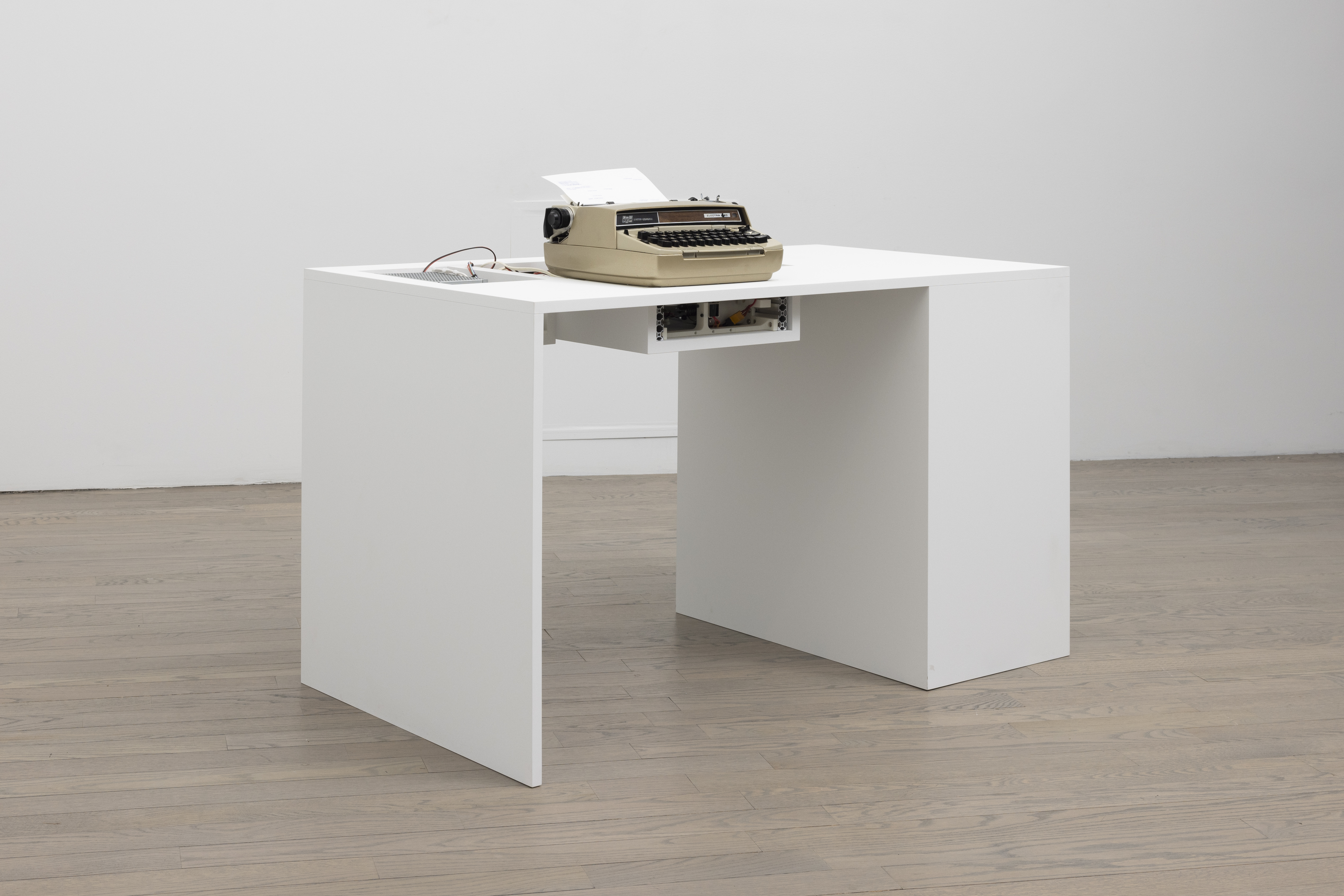
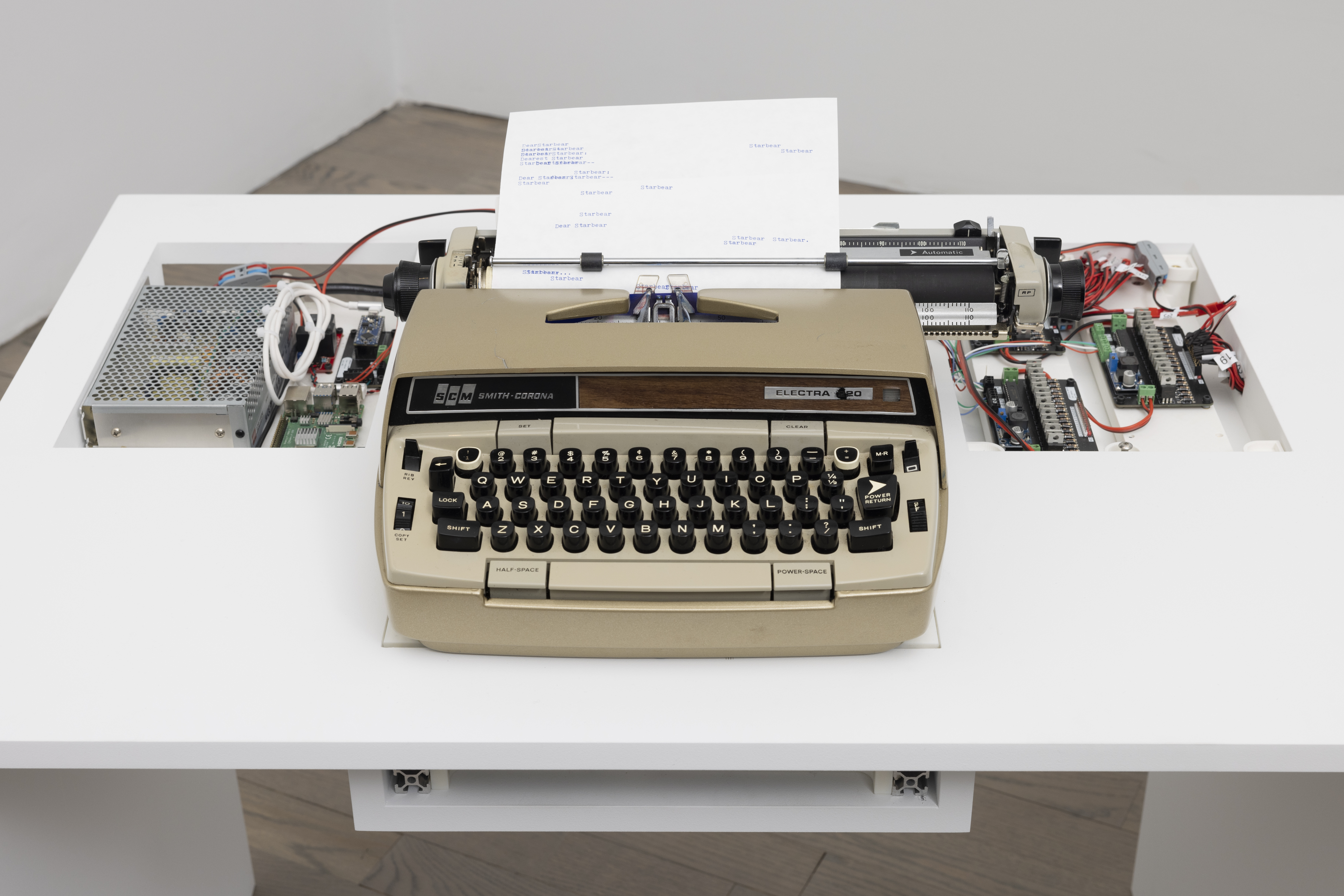
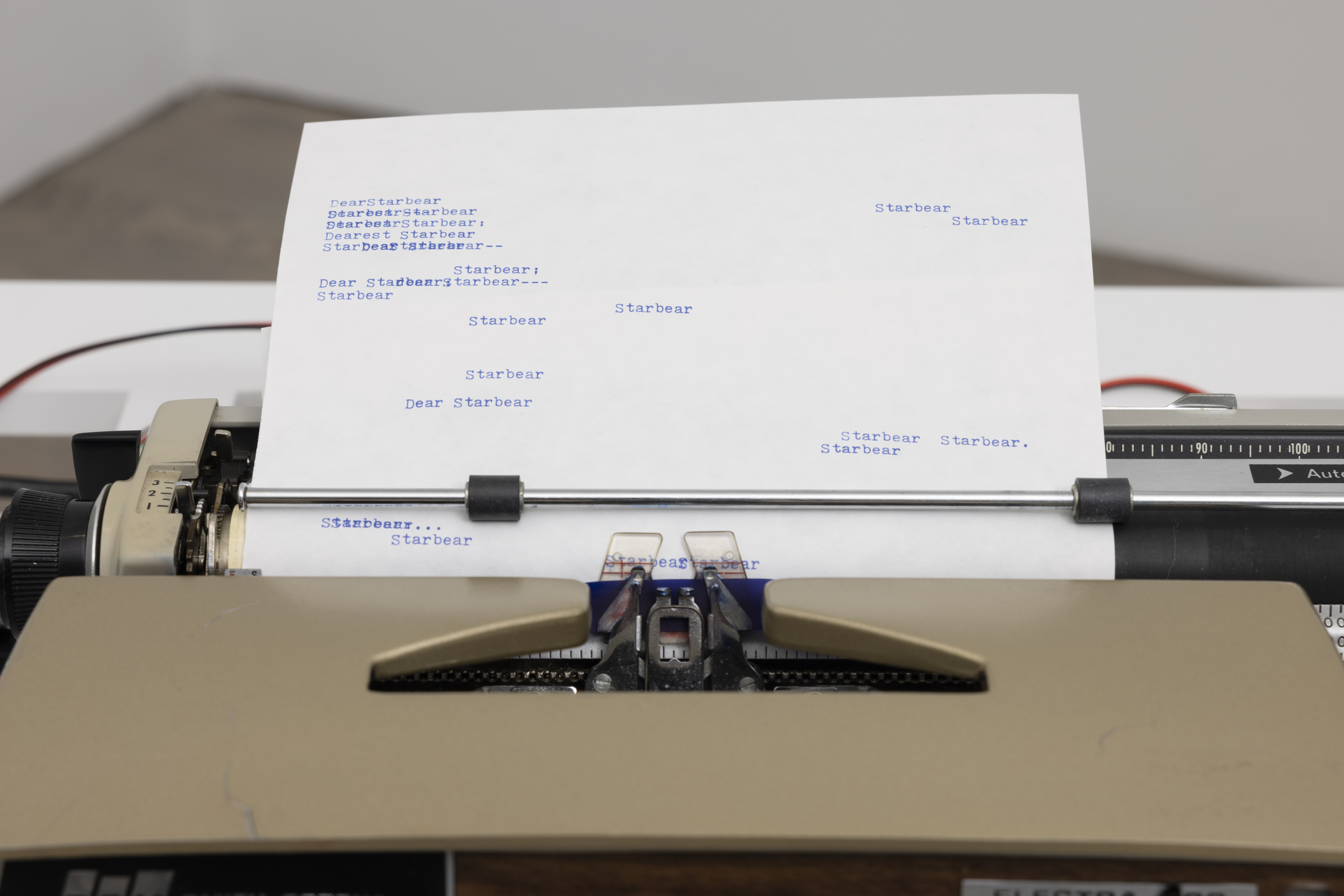
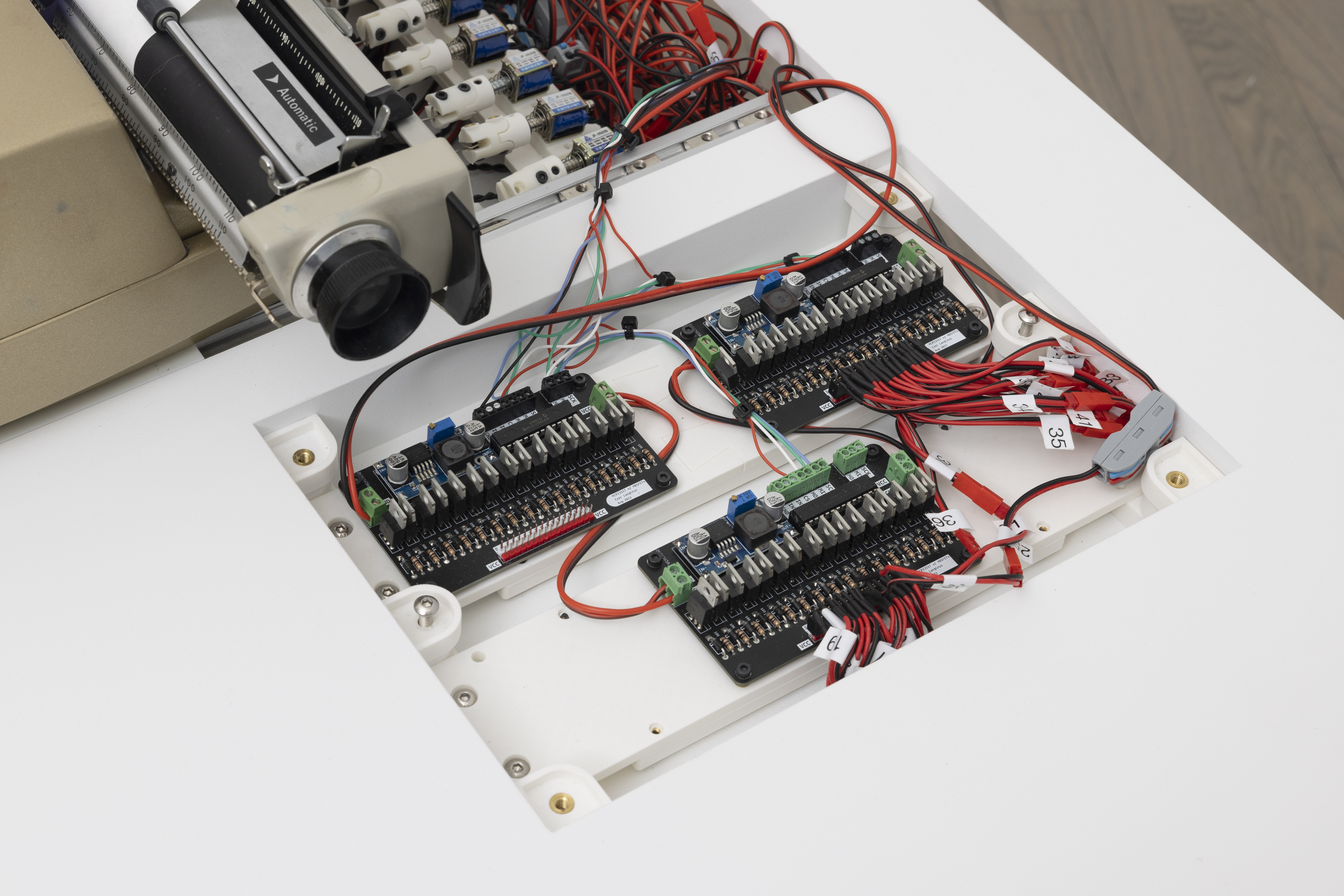


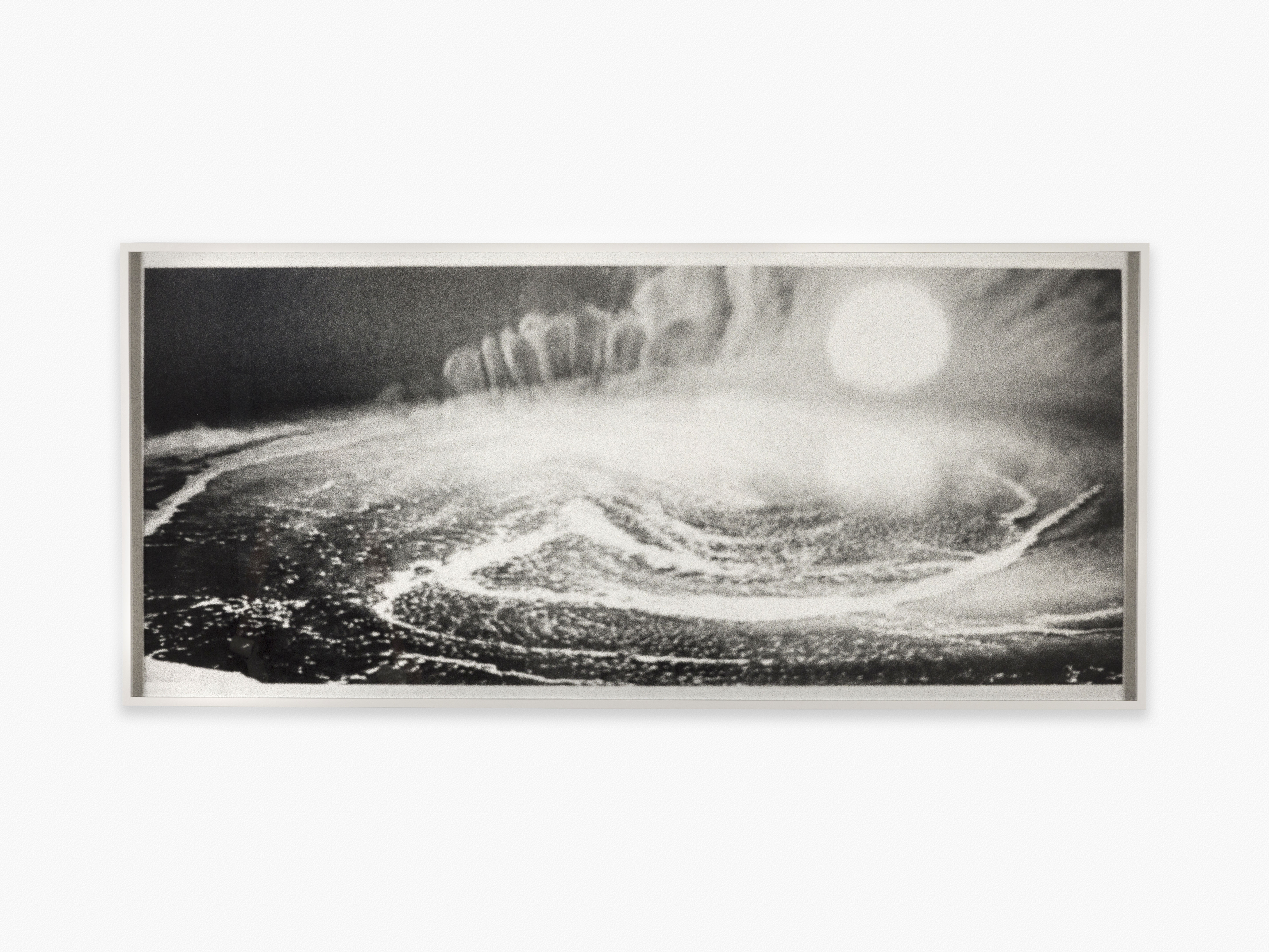








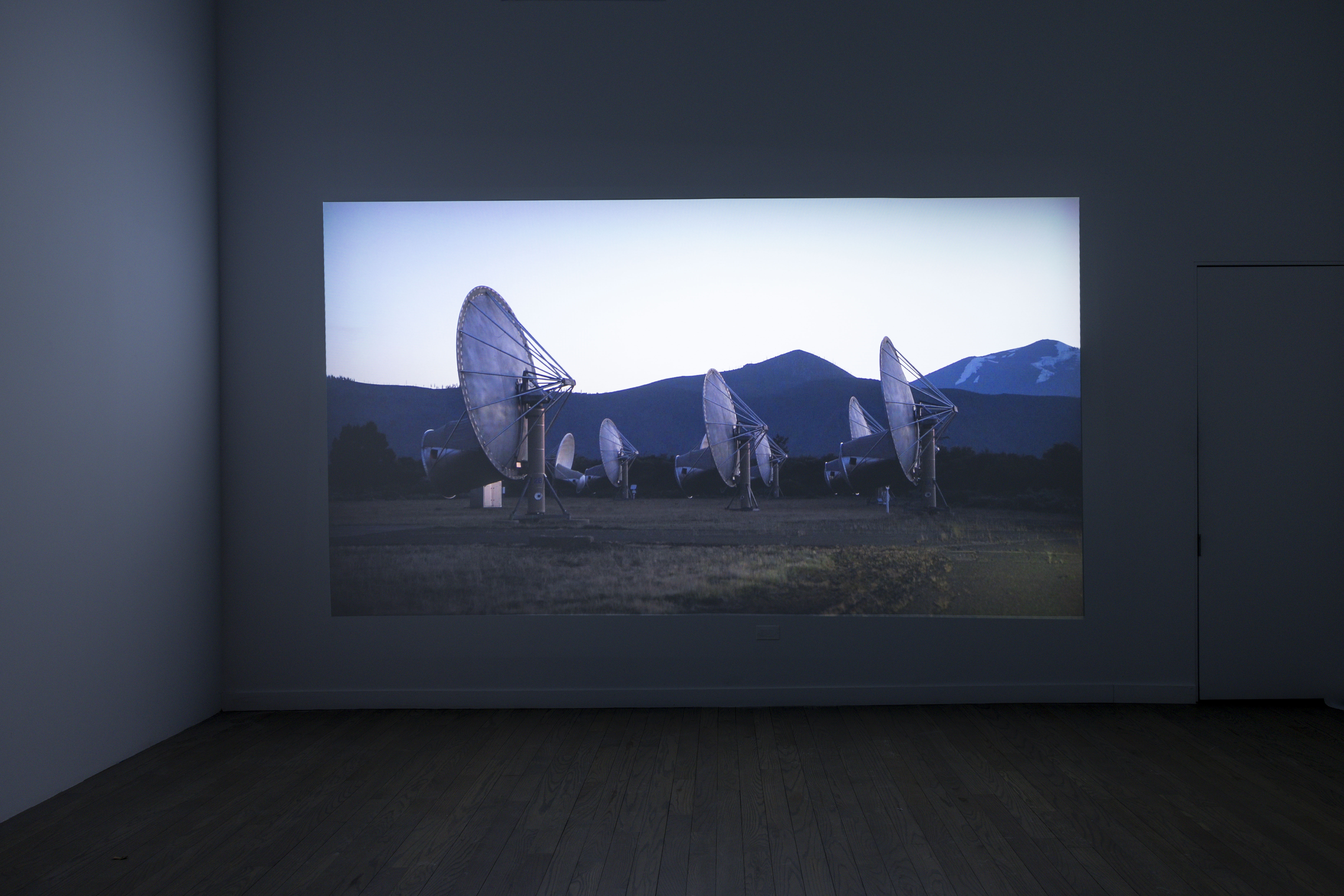
“You mean more to me than any scientific truth.” ―Kris Kelvin, Solaris
PATRON is proud to announce our third solo exhibition with New York-based artist Brittany Nelson (b. 1984). Nelson’s conceptual practice explores how science fiction, and the ongoing pursuit of space exploration, offer venues for the consideration of new social possibilities outside the limitations of heteronormative society. Utilizing analog chemical photographic techniques, historical science fiction and its archive, and visual culture from recent NASA missions, Nelson suggests how extraterrestrial, or non-human actors can function as proxies for queer life.
I can’t make you love me pulls open the human, and often deeply romantic quests at the heart of astronomical discovery, both real and imagined. Since 2020, Nelson has researched an extensive archive of letters between science fiction writer Alice B. Sheldon (under the male pseudonym; James Tiptree Jr.) and novelist Ursula Le Guin between 1971 and 1976. Their exchange held space for real-life para-fiction. While withholding her true gender identity, Tiptree’s flirtatious fantasies were received and reciprocated by Le Guin—Tiptree would eventually reveal her true gender identity to Le Guin in 1976, and subsequently see Le Guin as a confidant “Ursula, Ursula I am petrified. - - - will they take it as ‘deception’?”
The exhibition opens with the persistent melody of everything but the signature is me (2023), an automaton typewriter, programmed by Nelson to perpetually dictate Tiptree’s excerpted term of endearment for Le Guin; “Starbear.” This coded evidence of Tiptree’s unrequited desire is extracted from their original context, scattered over the page in blue ink. The incessant transfer of the name by a non-human writer, suggests how Tiptree’s own use of a pseudonym functions as a metaphor. The letter, much like the format of science fiction, is a truth written in the present to apply to a future sense.
Nelson further collapses past, present, and future in her Solaris series, expansive gelatin silver prints developed from stills of Andrei Tarkovsky’s 1972 film. Solaris narrates the plight of Kelvin, a cosmonaut who is pulled into the waking nightmare that has befallen his space station comrades as time and psychological acuity become increasingly warped. Nelson took screenshots from the film and rephotographed them onto 35mmx film at high speeds, a process which accentuates the silver grain of the image. The textural, impressionistic prints, developed with one of the last remaining Fotar Enlargers from the 1950’s, position us within the film itself, vulnerable, gazing outward onto the swirling waters of a foreboding form of extraterrestrial life. Solaris’s swirling waters of the ocean planet, like the mist-moody landscapes of Romantic painters, suggest that the scene is not an image of an experienced reality, but an existential experience of loneliness and mortality.
Functioning as a coda, and bringing us to the present is I can’t make you love me, a single channel video, titled after Bonnie Raitt’s 1991 sentimental ballad. Edited from Nelson’s first-hand documentation during a research trip over the summer of 2023 at Hat Creek Radio Observatory in Northern California, the film tracks the artist’s own encounter with an isolated astronomical telescope array (Allen Telescope Array or ATA), technologies specifically designed for the Search for Extraterrestrial Intelligence (SETI). In the film, a presumed human subject sweeps spotlights across the open fields of the observatory, glimpses and fragments of the satellites appear as outlines in the dark as they themselves contemplatively yearn for the faintest glimmer of data to affirm their existence. Brittany Nelson: I can’t make you love me collapses and expands Nelson’s poetic parallels between Tiptree’s own closeted desire, the speculative space of scientific discovery, and the ongoing human quest to find, and communicate with, someone like us.
- the full press release available here


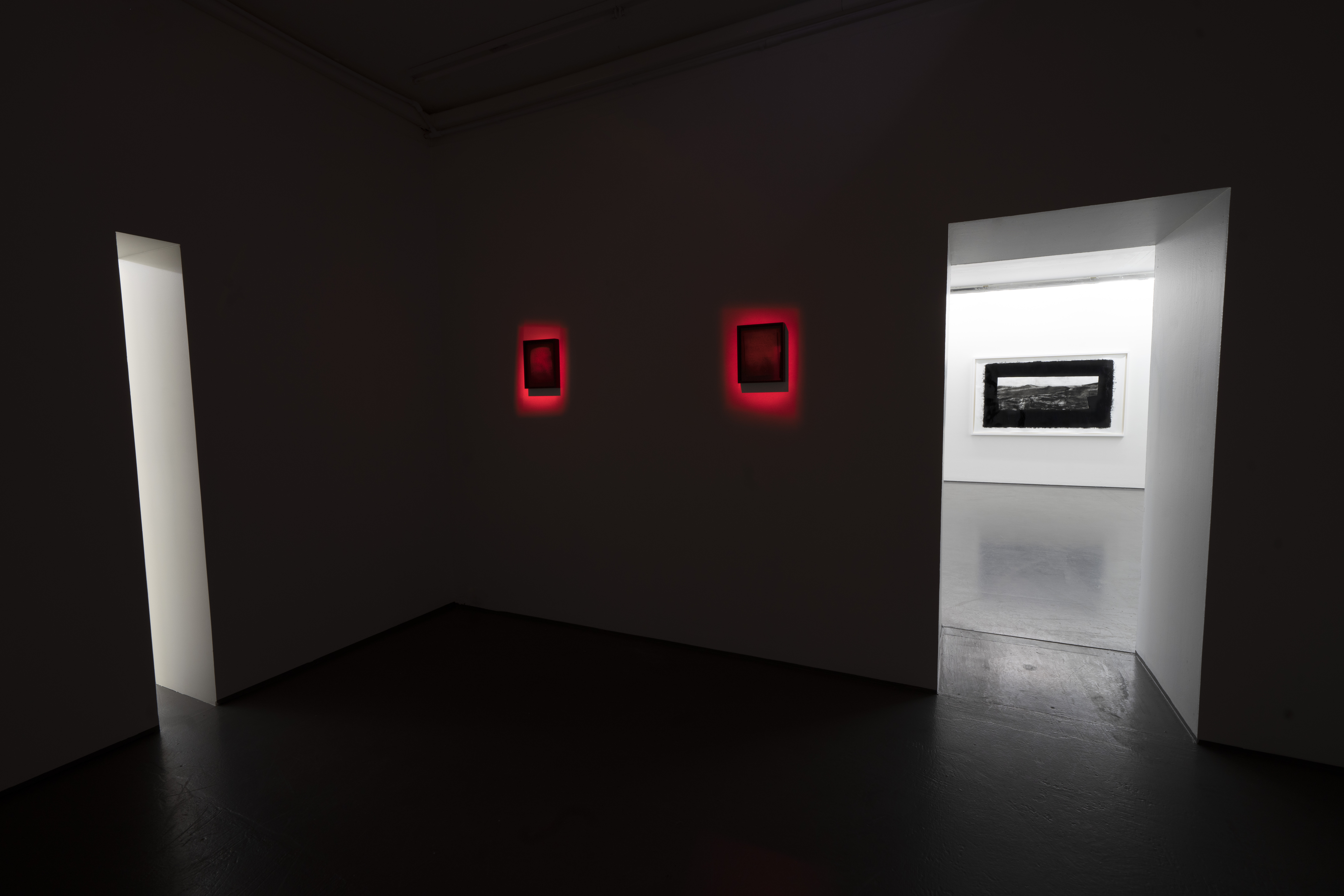
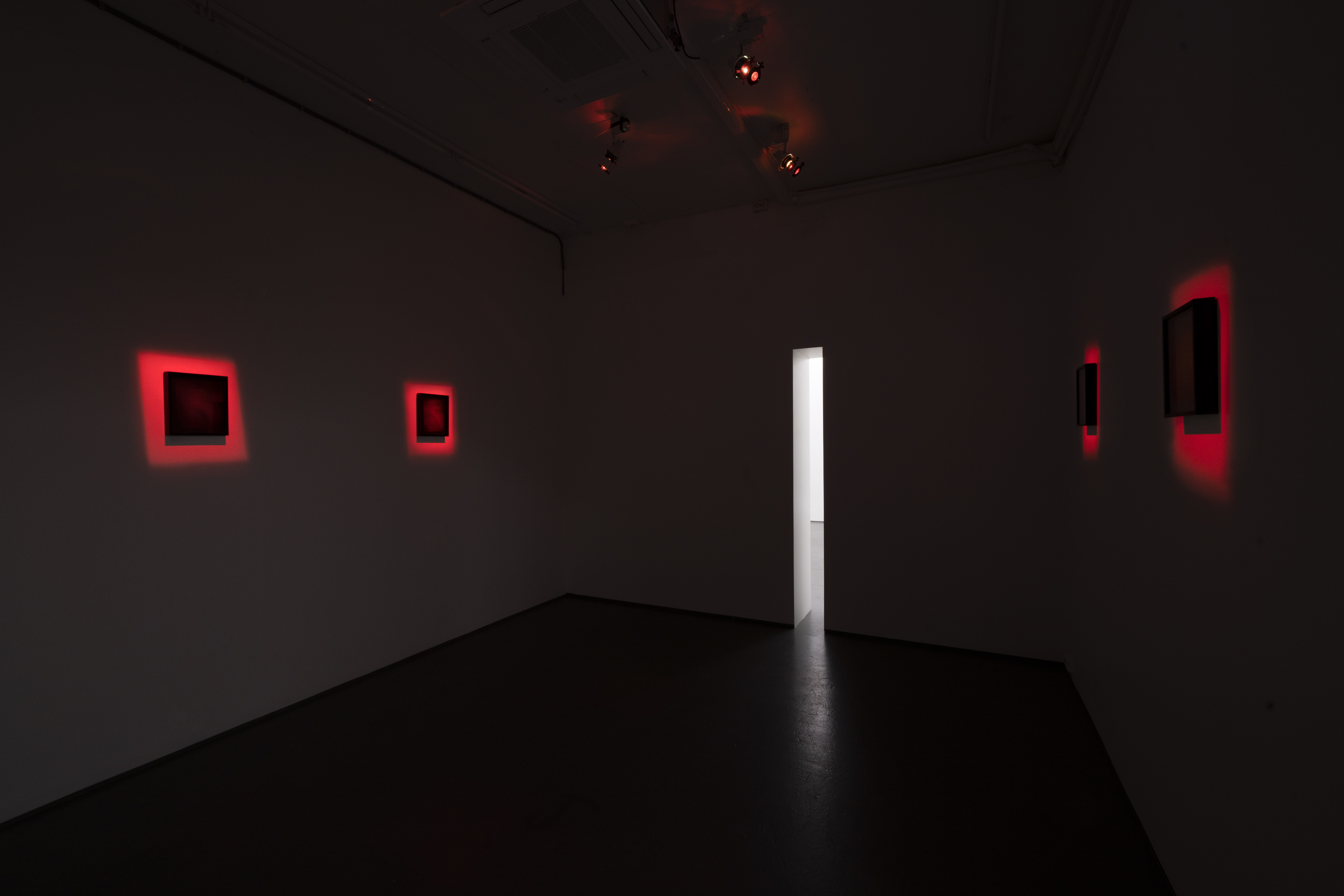
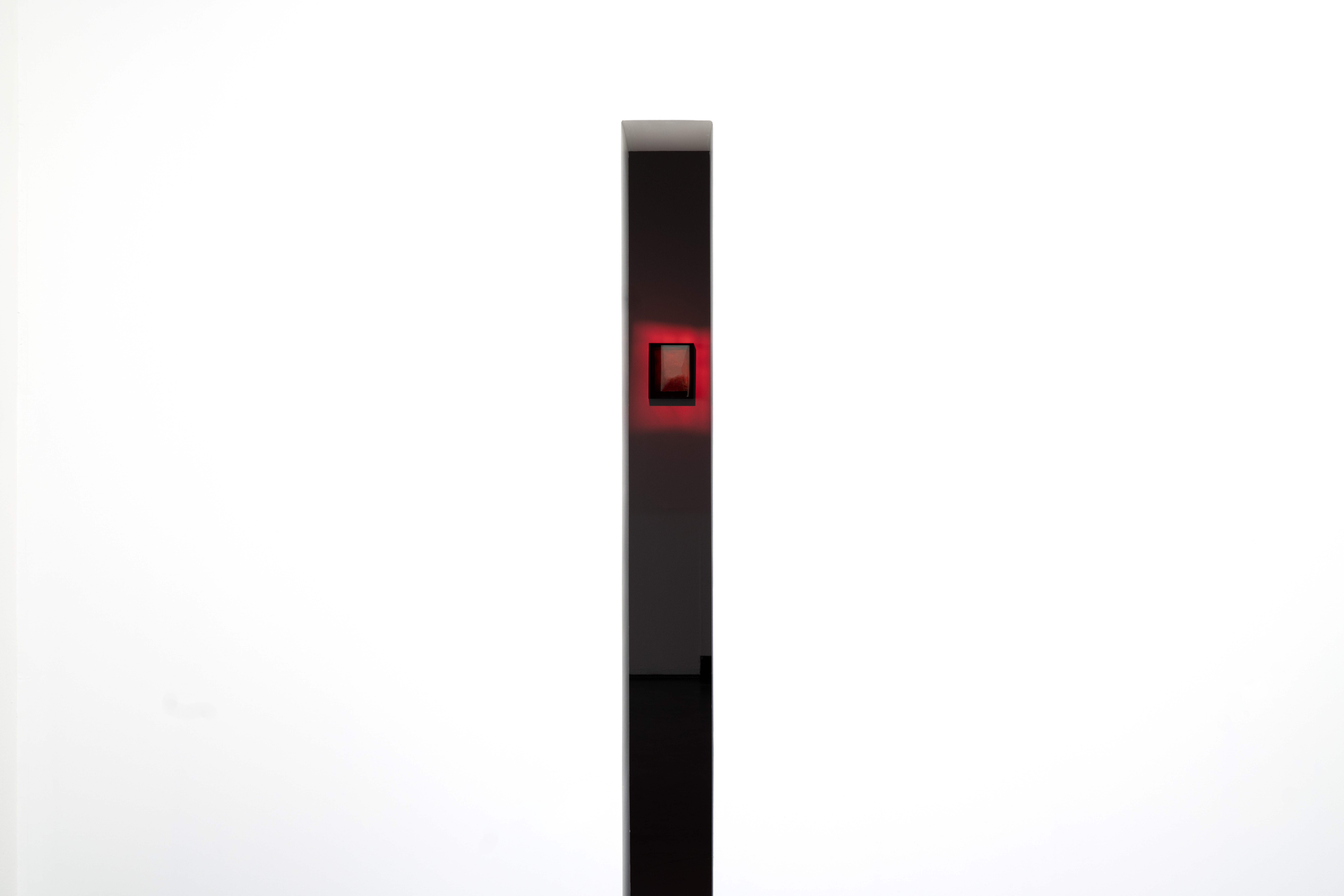
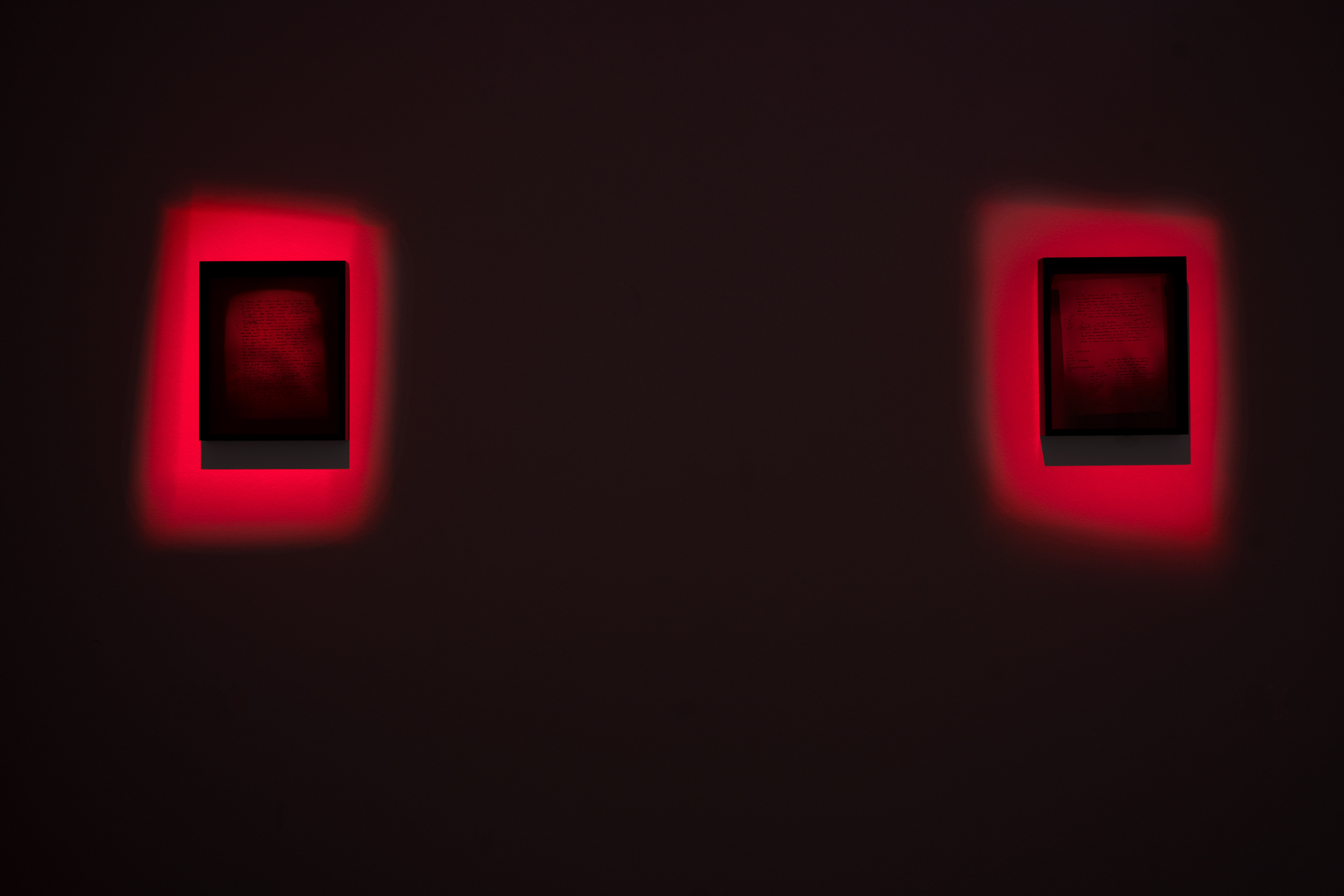


A beautiful trait of Brittany Nelson’s work is that in taking care of others, through photography, she addresses in a radically delicate way the devastating effects on individuals—and I would say also on technology—of compulsory heterosexuality.
—Chus Martínez, “I Want to Touch the Cosmos with My Eyes”
Fotogalleriet presents the first solo exhibition in the Nordic countries of American artist Brittany Nelson. Working with photography through chemical techniques from the 19th and 20th centuries, Nelson unveils the queer unconscious of technology.
Brittany Nelson’s work rewrites photography’s history. As one of the most exciting artists of her generation, Nelson presents a critique of Western ideas around the exploration and colonization of space, and poses it against modernity and neoliberal ideals of progress.
Nelson produces some of the world’s largest “bromoil” prints, referring to a technique from the 1920s. Bromoil—a romantically charged handmade process that replaces the silver used for photographic prints with lithographic inks—embodies Nelson’s search for a different relationship between representation and technology. Using this photographic method, she re-contextualizes historical and modern science fiction and technological developments, including NASA images produced by robots known as “rovers.”
The works exhibited at Fotogalleriet are landscape photographs of Mars, a planet often representing both the future and the past in the public imagination. Nelson’s works appropriate images from the vast archives of the Mars rover Opportunity. The robot lived alone on the planet for 14 years and stayed functional well beyond its initial expected lifespan. The artist reclaims an unconscious life to the robot. In thinking of it roaming the planet as a search for companionship, Nelson considers the rover a “queer icon.”
Nelson’s work is interference, a glitch in the hundreds of thousands of files transferred to Earth from 70,404 million km away through space. Her work complicates these images, which are both science fiction in practice and form part of the world-conquering discourse of space travel—a similarly male-dominated realm as photography.
Meet Me At Infinity will include various new productions tackling ecology, futurism, and techno-fetishism. As part of Fotogalleriet’s program, the exhibition addresses and challenges established structures and norms in and outside the art field. It links the artistic program to other fields such as politics, society, health, space exploration and technology. Furthermore, Meet Me At Infinityprescribes that photography and the aesthetic field should not merely act within society, but also pose demands.
Curators Chus Martínez and Xiaoyu Weng, and artist and writer Himali Singh Soin have been invited to contribute texts to the exhibition book.
On the opening night, award-winning novelist and queer legend Gerd Brantenberg will read unpublished texts. Fotogalleriet’s Artistic Director, Dr. Antonio Cataldo, and Director of CAP Saint-Fons (Centre d’art de Saint-Fons) Alessandra Prandin will hold inaugural speeches (Brittany Nelson’s solo I Wish I Had a Dark Seawas held at CAP Saint-Fons in spring 2022 and paved the way for the Oslo exhibition).

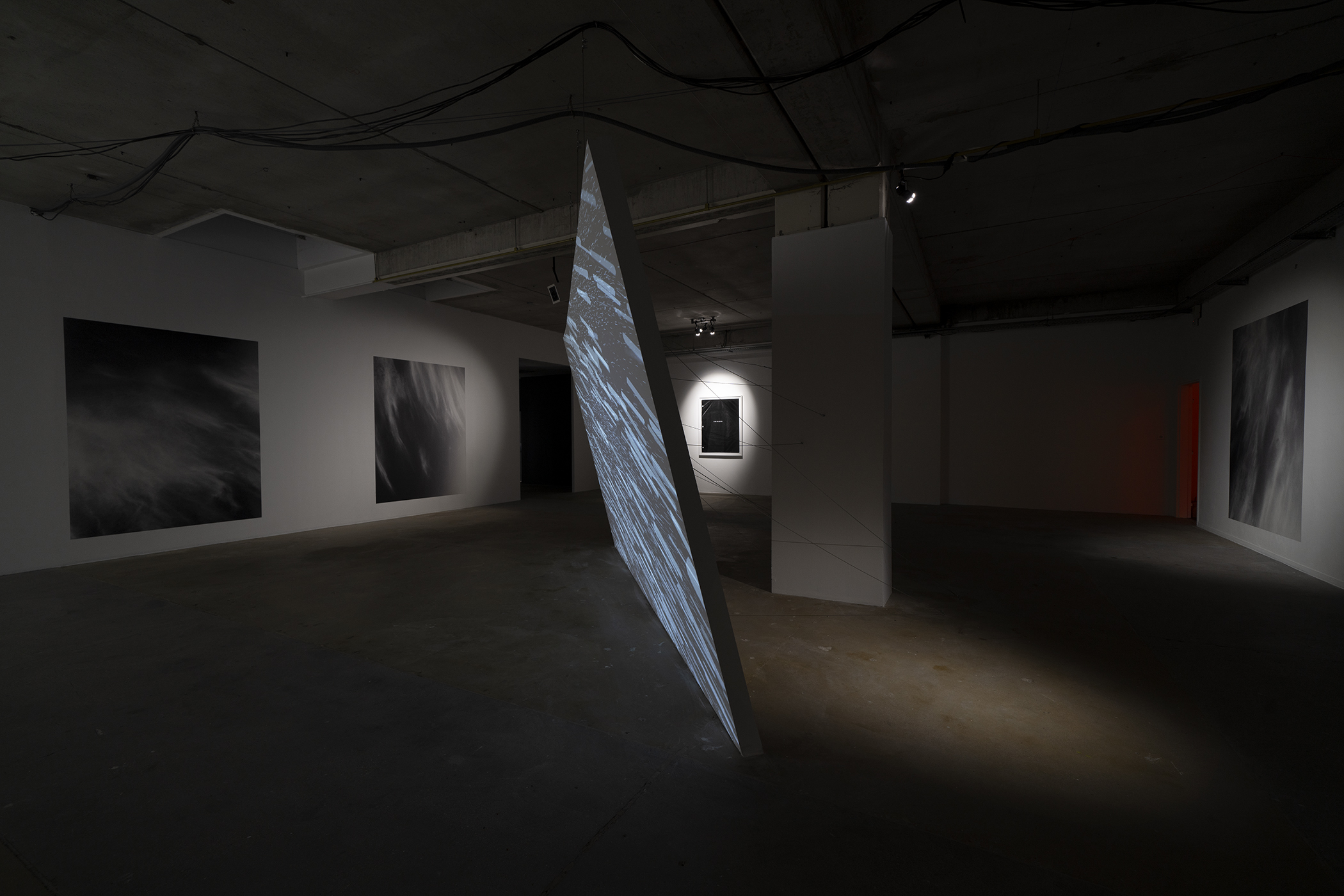





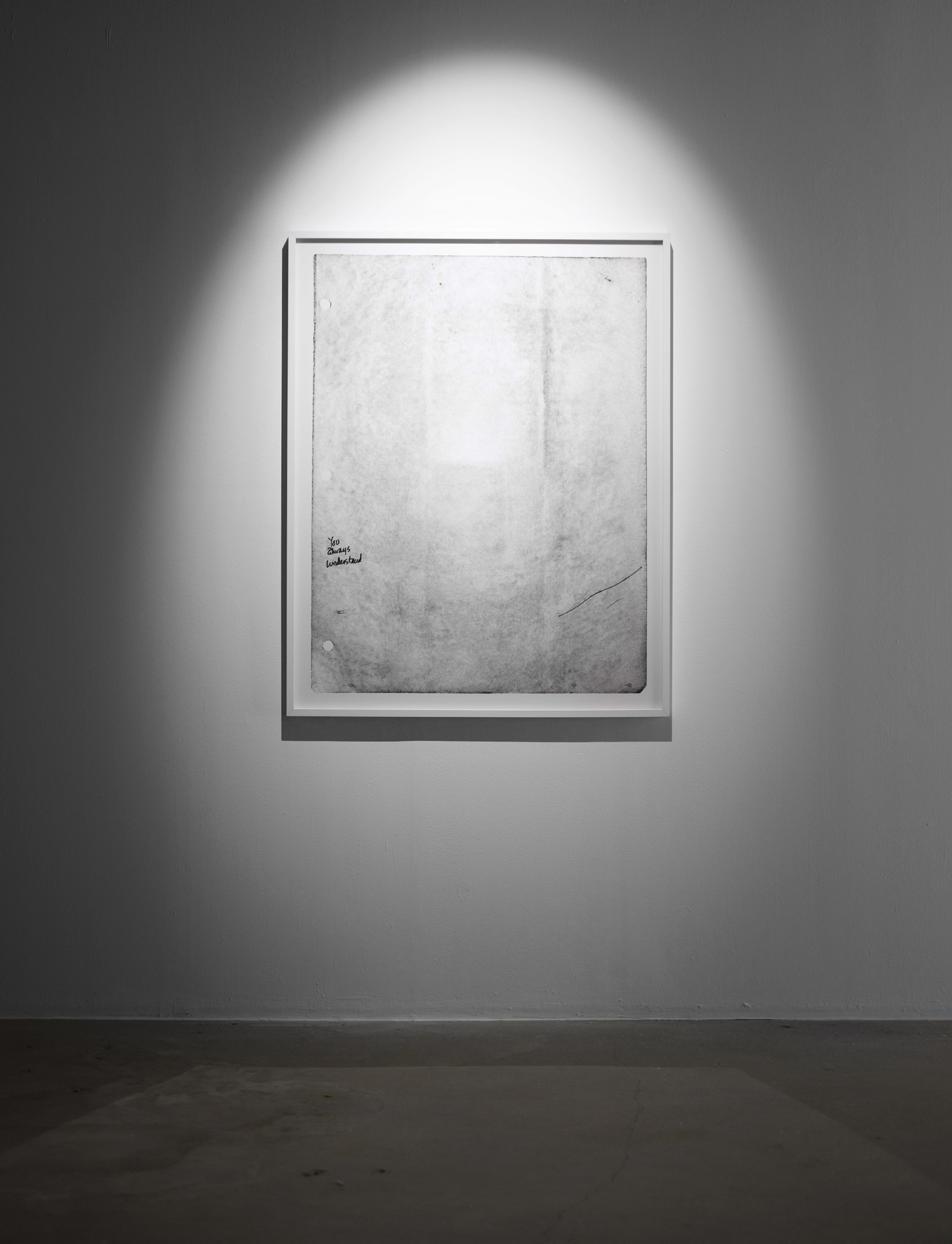

“For her first solo exhibition in France, at the CAP Saint-Fons, the American artist Brittany Nelson will be presenting works from the series Starbear and Tiptree’s Dead Birds, new productions and a new video which will be shown for the first time at the Art Centre. I wish I had a dark sea paves the way for the retrospective that will be devoted to her at the Fotogalleriet in Oslo (Norway) in autumn 2022.
The exhibition is built around the figure of Alice B. Sheldon, known under the male pseudonym of James Tiptree – a prolific author of science-fiction novels in the 1970s – who was closeted. Desire, gender identity and the great loneliness hidden behind an alter ego, are at the heart of her correspondence with another successful writer – Ursula
LeGuin – for whom Sheldon developed deep and unspoken feelings. For several years, Nelson has been interested in this rich corpus and has conducted research in the vast archives of the feminist science-fiction collection at the University of Oregon. The result is the gelatin silver prints of the Starbear series, presented at the CAP in large-format prints, where the artist erases the text to leave only the words of affection intended for LeGuin, like furtive appearances on the photographic surface. In I wish I had a dark sea, which gives its title to the exhibition, the artist inverts the image, treating the text as a landscape where words float on a vast black surface, a dark sea, a desert inhabited by Sheldon’s solitude.
The pages of the writer’s notebook emerge from areas of light or shadow in the Tiptree’s Dead Birds series, where holographic reproduction – an ancient process where refraction and diffraction create optical illusions – gives a new dimension to the text, a depth that is both formal and symbolic. As letters from the past that speak of the future, the
holograms bring us still closer to Sheldon’s intimate universe. She referred to the women she loved (but who rejected her) as “dead birds,” consolidating the feeling of an unfulfilled desire.”
the full press release available here.





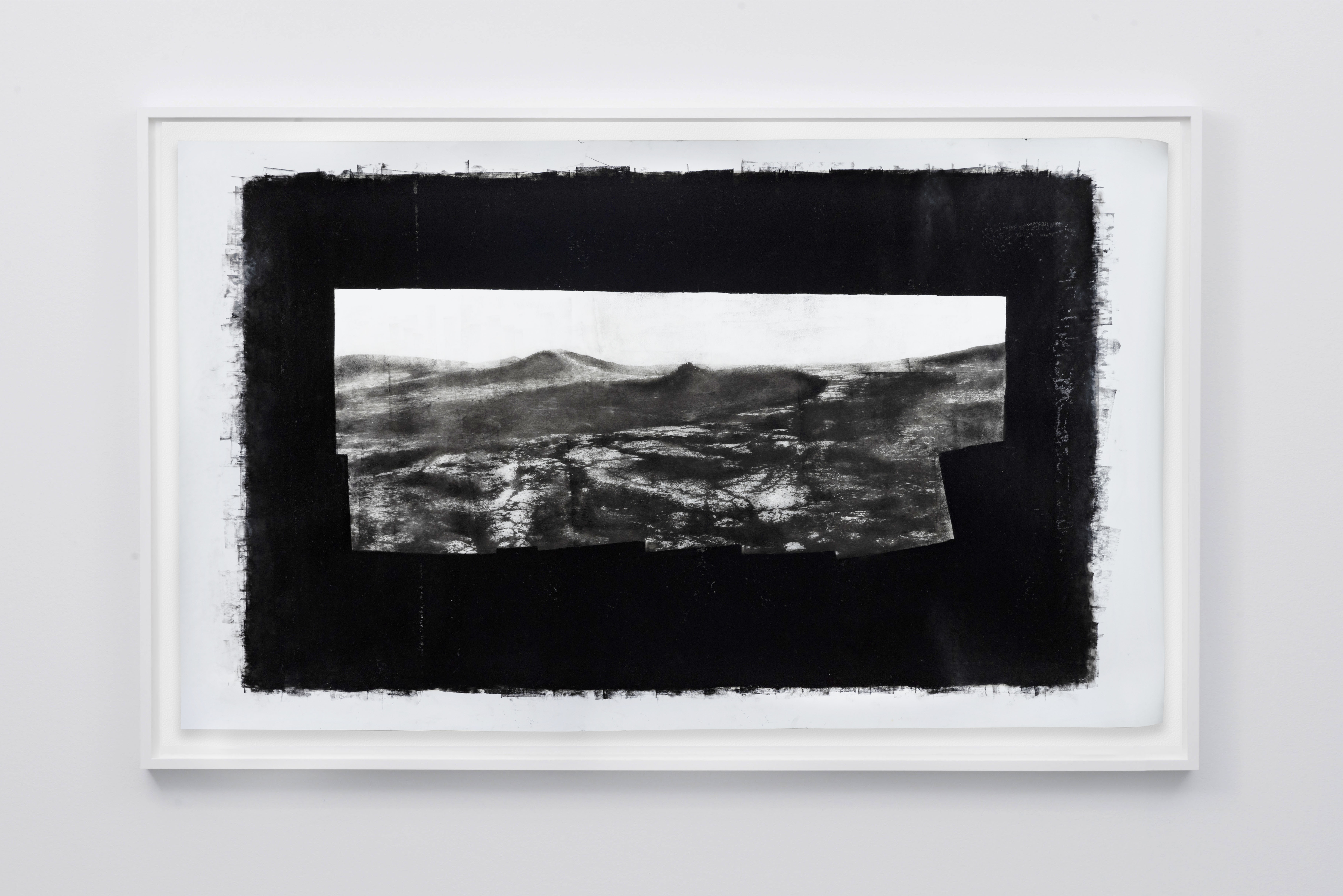





In 2004, the American space agency NASA launched a mission of two rovers to prospect the surface of Mars. The twin vehicles named Spirit and Opportunity were designed to roam the planet for 90 sols (90 Martian days corresponding to 24 hours and 40 minutes each), collecting data on territory, evidence to provide clues on ancient life and water, and other findings that might brace hypotheses of future habitability. Spirit fulfilled its mission and ceded its functions in 2011, outliving its estimated lifespan by seven years, while Opportunity is still wandering the planet today.
Able to clean its solar panels from dust swirled up during Martian storms, the rover was assigned new scientific missions originally unintended and unforeseen. Among the outcomes of these are multiple images taken by Opportunity as it looks back over its path and photographs its own tracks, which are held in NASA’s publicly accessible archives. Auspicious and pioneering as future visions of life on Mars may seem, the images of a lonely rover roaming the surface of this faraway planet, long after completing its mission and abandoned by its twin, evoke a sense of anthropomorphic solitude.
For the work Opportunity, Nelson reproduced one of Opportunity’s photographs in bromoil, a 19th century technique which became popularized by the pictorialist movement. Depicting the deserted Martian landscape, the work evokes both the nostalgia of hand-created, rather than recorded, bromoil photographs, and the futuristic endeavor to make this barren planet inhabitable. Looking at the black-and-white soft-contoured image, brought out by Nelson’s ink brush touching the photographic surface, we may think of humans longing to touch, and eventually inhabit, this extraterrestrial landscape of craters and sand dunes—a longing harnessed by the “pioneers” attempting to create a new habitat for those adventurous and wealthy enough to partake.
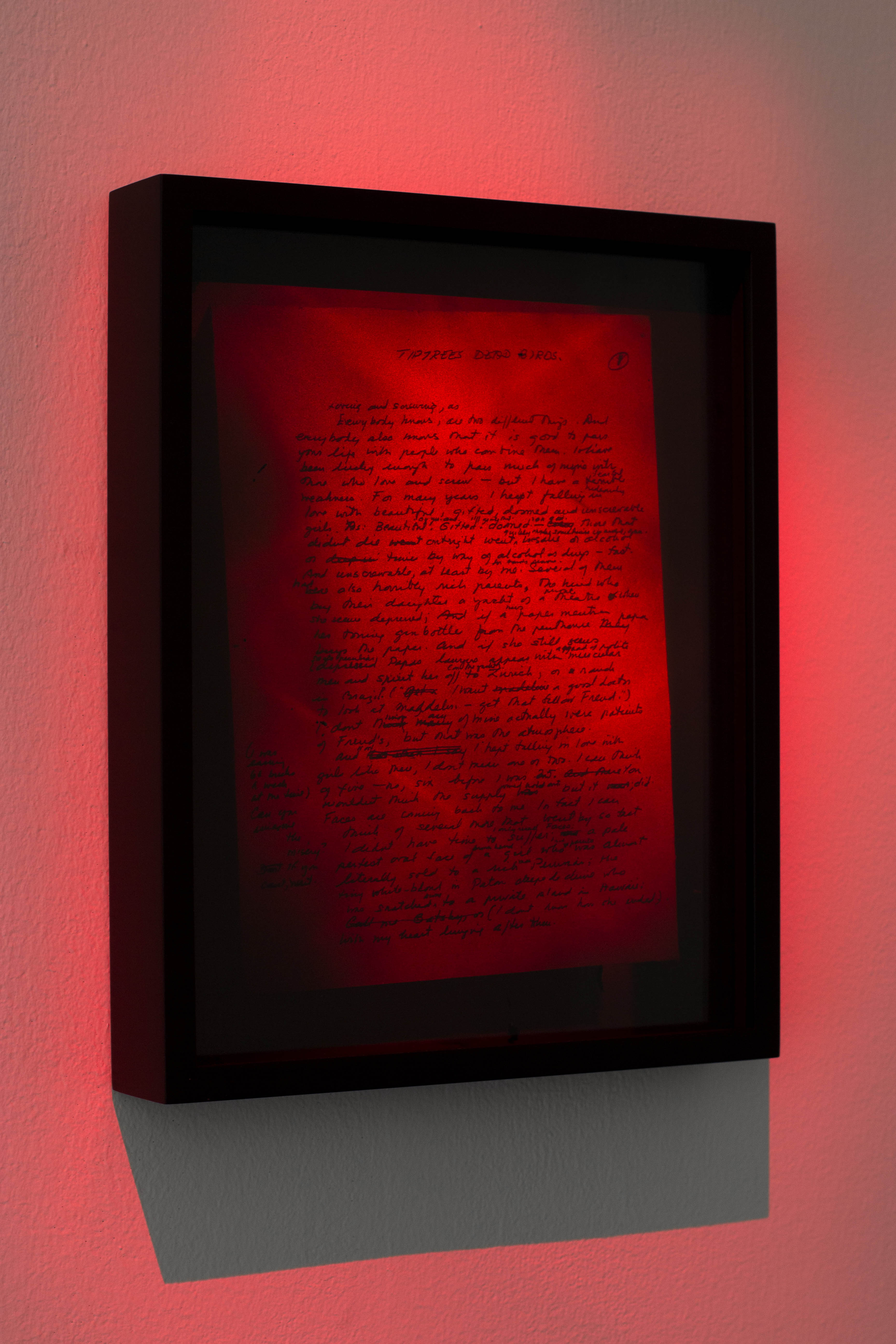




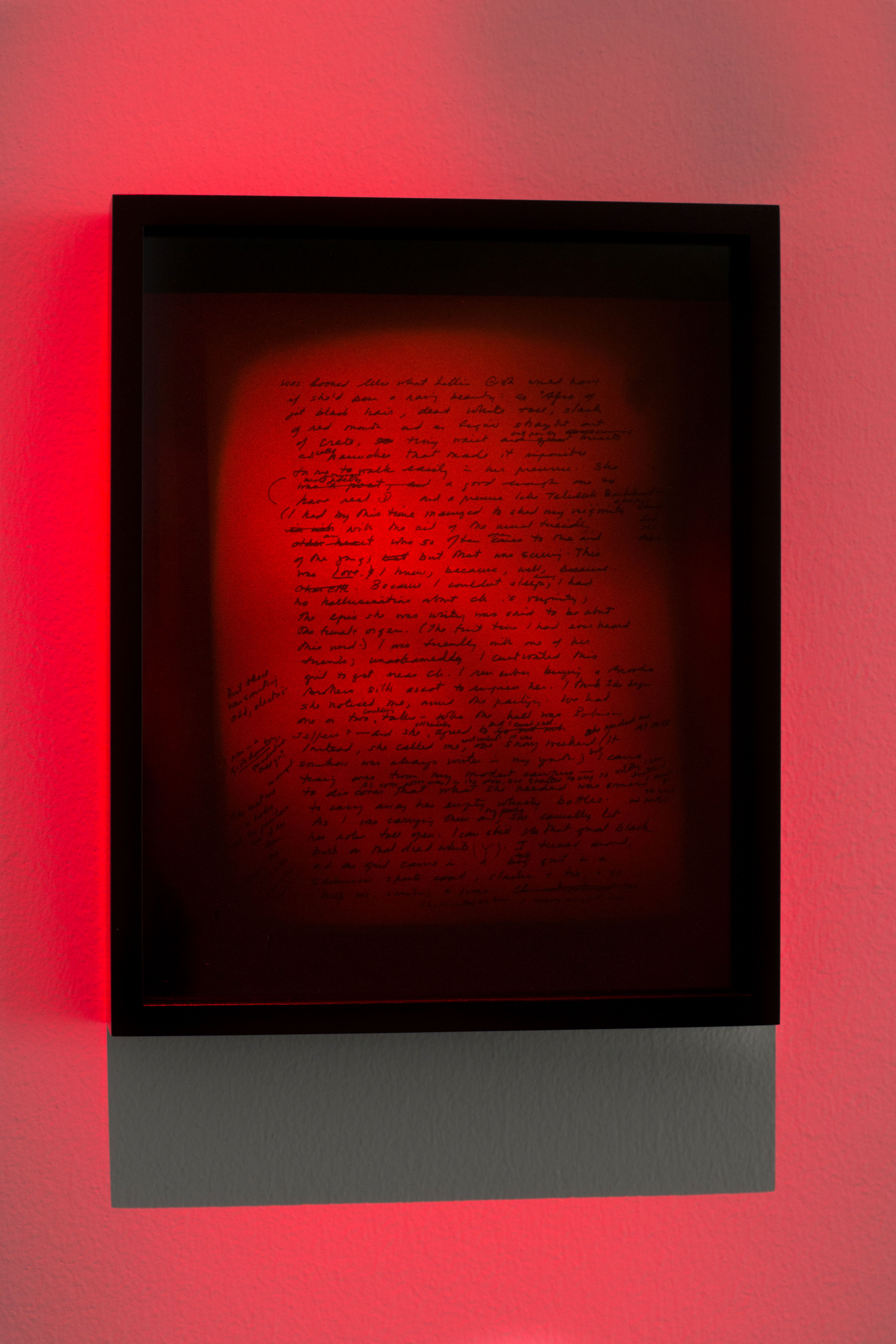



James Tiptree Jr., really Alice B. Sheldon, insulated herself with a male pen name and male narrative voices in the 1970’s in order to discuss her closeted sexuality. Working with Sheldon’s biographer, Julie Phillips in Amsterdam, digital scans of a series of six hastily handwritten letters from Sheldon were obtained titled “Tiptree’s Dead Birds”. Writing as Tiptree, she details all of the women who had rejected her in her lifetime. These letters read as an epitaph to a lifetime of isolation. With the original documents subsequently lost, the scans were captured as glass plate refelctive holograms to replace the physical form of the letters, and to provide a window into Sheldon’s alternate universe.